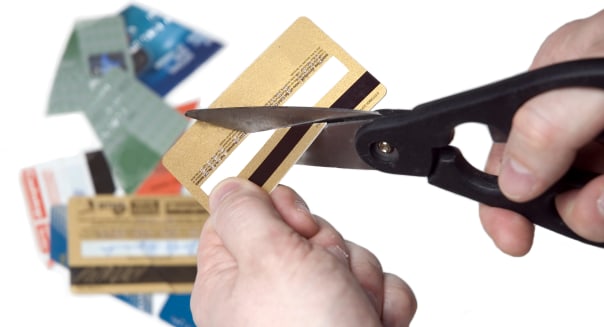10:41 AM How to Pay Down Credit Cards to Boost Your Credit Score | ||||
#how to increase credit score #About
If you know anything about credit scores, you know carrying high credit card balances is a big no-no. In fact, your debt-to-credit ratio (how much you owe versus your total available credit) makes up about 30 percent of your overall credit score. And revolving debt -- like credit cards -- weighs heavier than other outstanding debts -- like your mortgage or car loan. So if you're carrying a bunch of maxed-out credit cards, your credit score is likely in the tank. The most straightforward way to improve your debt-to-credit ratio is to simply pay down those balances. But chances are if you're in a lot of debt, you can't pay off all the balances right away. (That's how you got here in the first place, right?) Here's the good news: You don't have to pay your credit cards off to boost your credit score. But to get the most credit score traction out of every extra payment, you do need to come up with a plan for paying down your credit cards in a certain way. The Snowball Method The snowball method is excellent for paying off debt quickly and efficiently. Basically, you throw extra money at one debt, and when it's paid off, put the extra plus the old debt's minimum payment toward the next debt. Repeat this until you're debt-free. This is an excellent way to get out of debt, if just getting out of debt is your goal. But what if your goal is to get out of debt while also boosting your credit score as quickly as possible? Maybe you're hoping to apply for a mortgage soon, or a car loan? In this case, the snowball method probably isn't how you want to start. Eventually, you might switch to that, but you may want to begin by evening out your credit card balances. Lowering Your Debt-to-Credit Ratio When FICO calculates your credit score. it looks at not only your overall debt-to-credit ratio, but also the individual debt-to-credit ratios of your various credit cards and other revolving debt accounts. Here's an example:
But since your score also accounts for individual credit cards, you can see that Card 2 is hurting you the worst -- it's nearly maxed out, which is not good. Card 3 is posing the smallest problem, since it is nearly in that "good" range.
| ||||
|
| ||||
| Total comments: 0 | |

 Getty Images Moving a balance to a zero percent APR transfer card could be a good strategy for paying down your pile of debt. By Abby Hayes
Getty Images Moving a balance to a zero percent APR transfer card could be a good strategy for paying down your pile of debt. By Abby Hayes